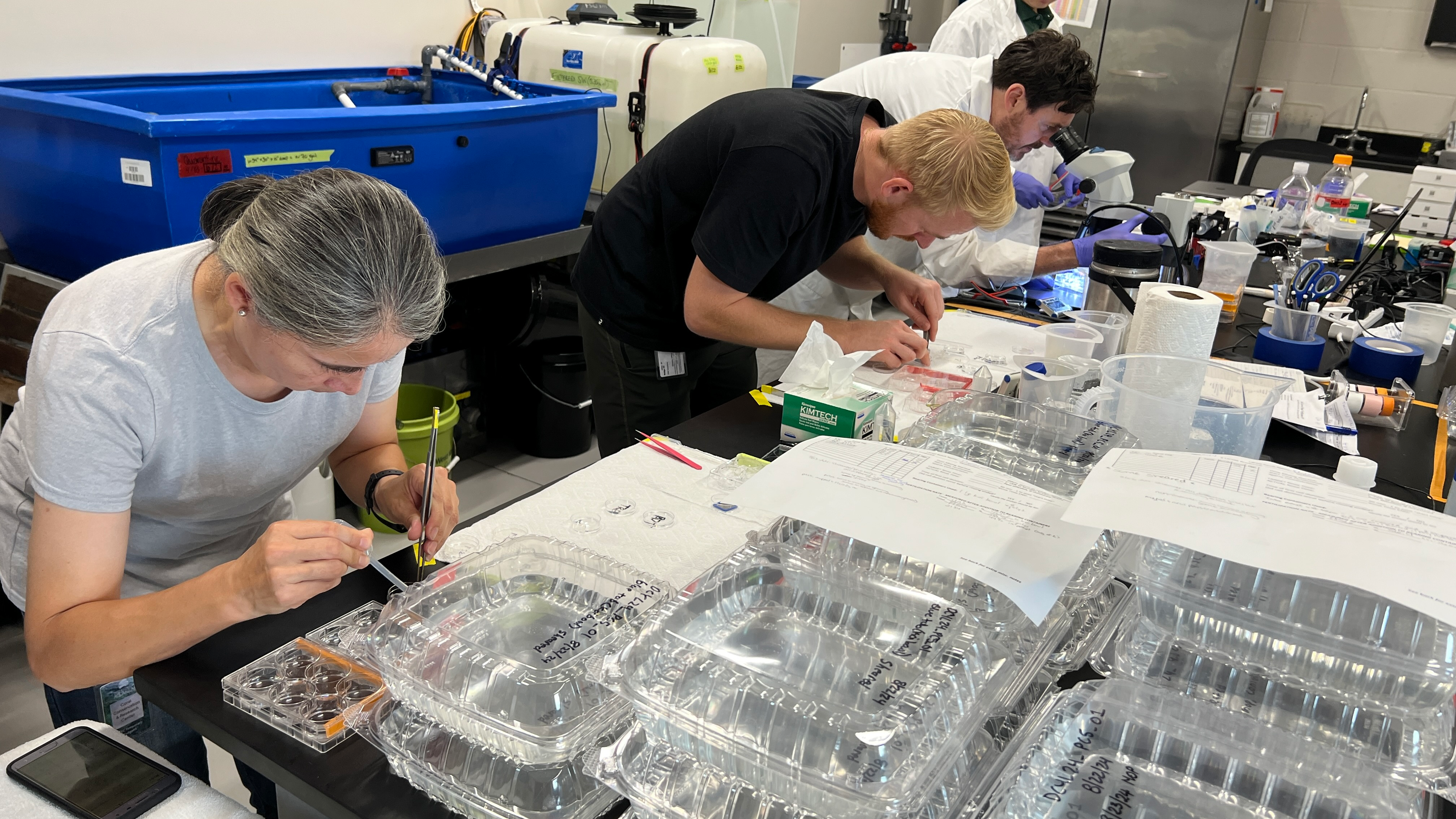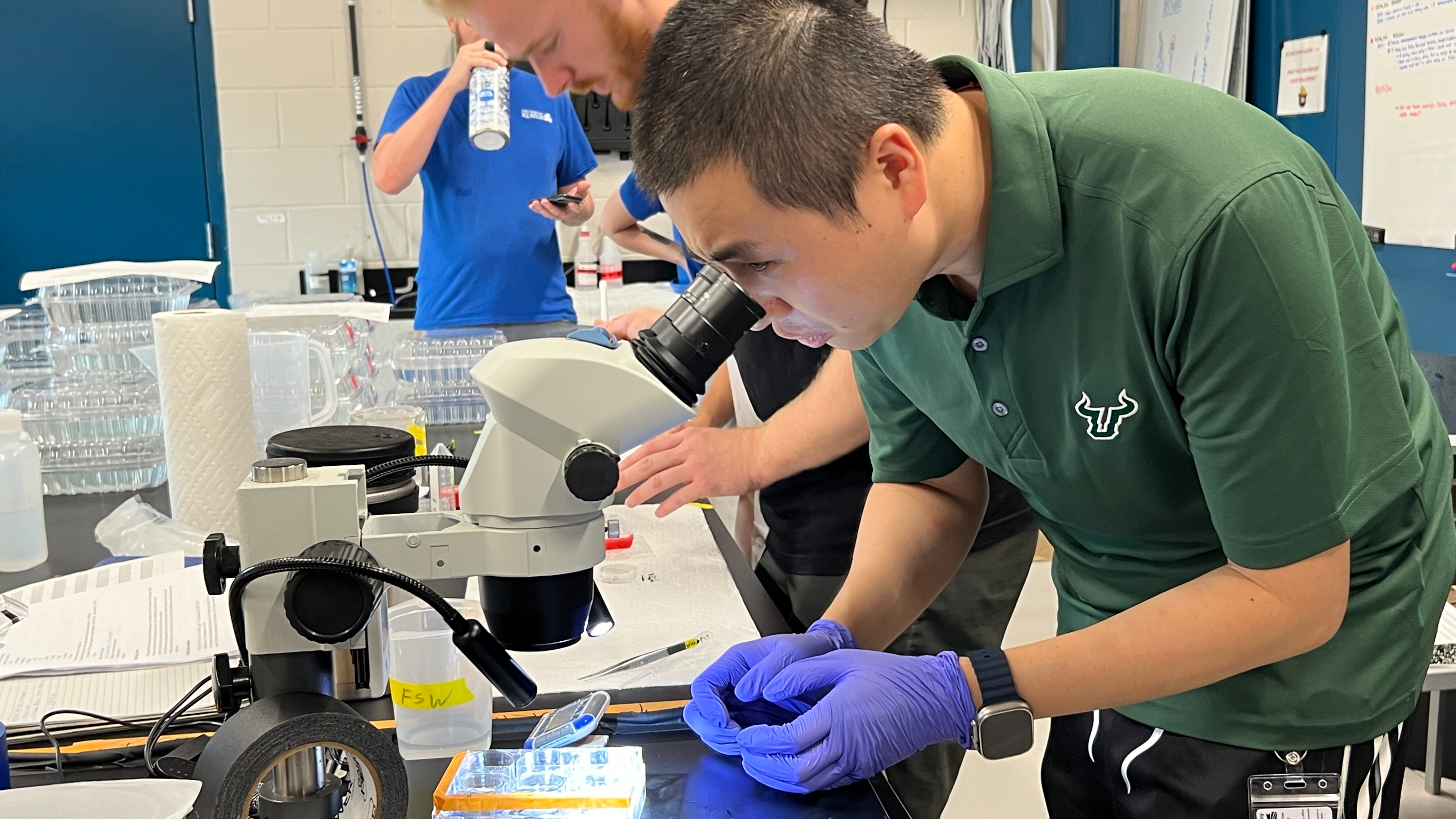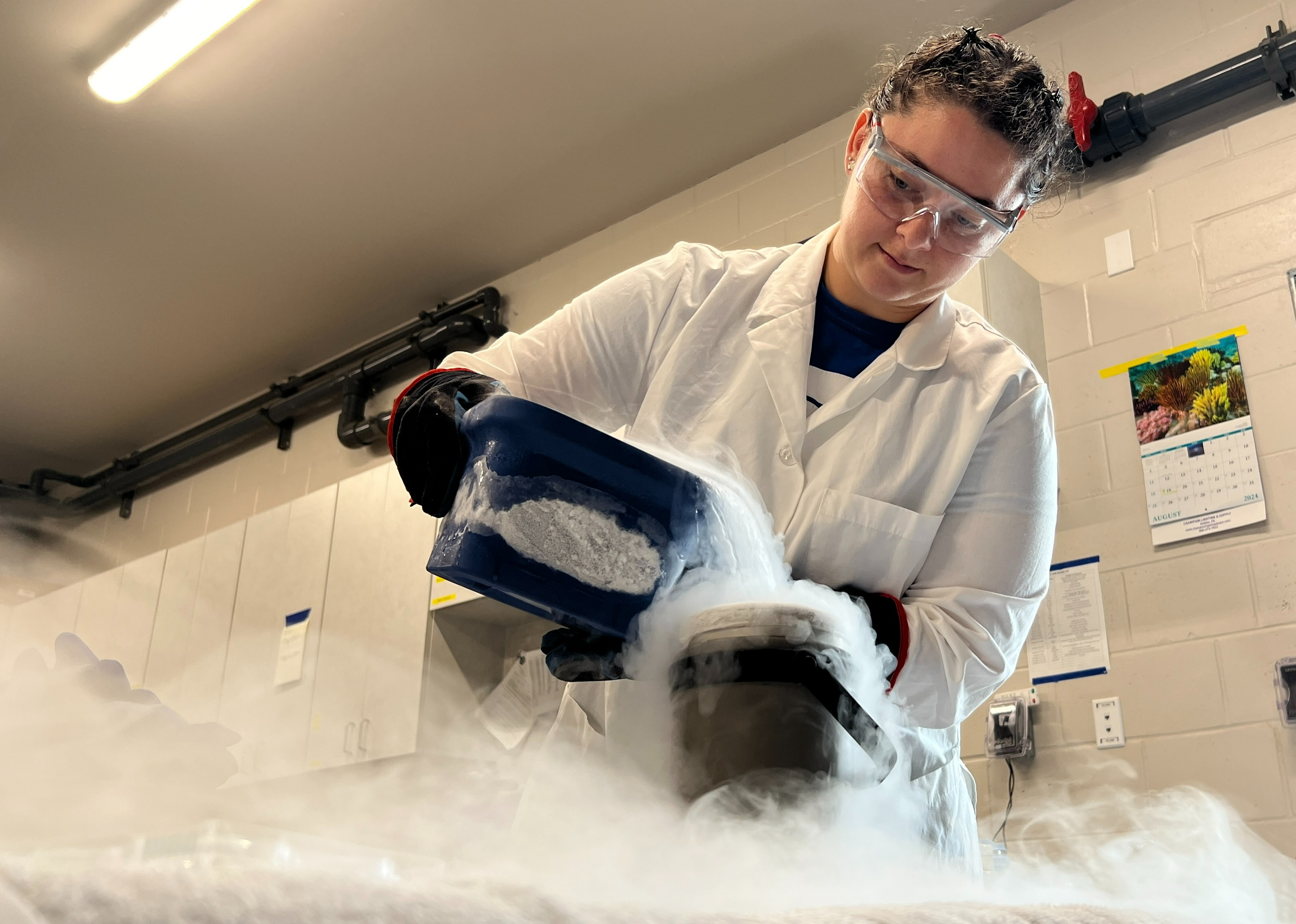An ambitious, new scientific project aims to preserve endangered corals using cutting-edge cryopreservation techniques. The latest phase of this groundbreaking work is happening this week at The Florida Aquarium’s Coral Conservation and Research Center in Apollo Beach, Florida, in collaboration with scientists from around the globe.
Cutting-Edge Coral Cryopreservation Work
The Florida Aquarium is hosting an international team of coral reproduction experts, cryobiologists, and engineers who together are attempting to cryopreserve the early life stages of the critically endangered pillar coral, Dendrogyra cylindrus. When pillar corals reproduce, their eggs develop into tiny, swimming larvae, only a fraction of a millimeter long. Their small size creates an opportunity for conservation: pillar coral larvae born at The Florida Aquarium will be used by the collaborating team to refine techniques for larval cryopreservation, a process that preserves living coral larvae in a frozen-but-alive form at ultra-low temperatures in liquid nitrogen.

To achieve this, the team is using a new, state-of-the-art cryomesh technology that can cryopreserve tens of thousands of larvae. When successfully cryopreserved, larvae can be thawed at a later time to recover their normal swimming function. Frozen larvae can live in biorepositories for decades or even centuries until needed for species recovery and reef restoration.
The team will attempt to settle and raise the larvae that were frozen and thawed, showing that the technique can be used to successfully preserve living coral juveniles at ultra-low temperatures. If successful, it will be the first time scientists have cryogenically preserved, thawed, and raised corals at the larval stage.
The team consists of:
- Keri O’Neil and Emily Williams of The Florida Aquarium
- Mary Hagedorn and Riley Perry of the Smithsonian’s National Zoo and Conservation Biology Institute
- Jonathan Daly of the Taronga Conservation Society Australia and the University of New South Wales
- Kristen Marhaver and Christian Lippens of the CARMABI Foundation (Caribbean Research and Management of Biodiversity Foundation) in Curacao
- Anastazia Banaszak and Victoria Grosso of the Universidad Nacional Autónoma de México
- Nikolas Zuchowicz of the University of Minnesota and ATP-Bio
- Zongqi Guo of the University of South Florida.
Long-Term Solutions to the Coral Crisis
This project is part of a larger international effort, funded by CORDAP, the G20 Coral Research & Development Accelerator Platform, to establish a global coral cryopreservation network, launching a decade-long effort to create permanent coral biorepositories, bank coral genetic diversity globally, and apply cryopreservation directly in reef restoration programs. There will be an additional workshop in Mexico in 2025 focused on the preservation of endangered elkhorn coral.
Four facts about the Atlantic Pillar Coral, Dendrogyra cylindrus
- The Atlantic pillar coral suffered a 97% decline in Florida from 2015 through 2024, largely from the impacts of stony coral tissue loss disease.
- Only 24 living pillar coral colonies remain on Florida’s Coral Reef.
- The Coral Conservation and Research Center at The Florida Aquarium houses 170 pillar coral colonies, representing the largest collection of living pillar coral colonies rescued from Florida’s Coral Reef, and containing more genetic diversity than remains in the wild in Florida.
- In 2019, The Florida Aquarium team successfully spawned pillar coral in the laboratory for the first time and the team has successfully grown pillar coral offspring into years-old coral colonies.
The capabilities and expertise at The Florida Aquarium present a unique opportunity for international collaboration and scientific progress: the team will leverage this reproductive collection of corals to advance cryopreservation techniques in order to securely preserve juveniles of this critically endangered species while improving cryopreservation methods for coral species globally.
Innovation in Cryopreservation
The work uses an innovative, engineered material called cryomesh to cool and warm coral larvae extremely rapidly in a protective mixture of chemicals, essentially a type of antifreeze for corals. Cryomesh has the advantage of cooling and warming at high rates, whereas previously, this could only be achieved with specialized lasers. With the right cooling and warming rates and the right mixture of protective chemicals, it is possible to prevent the formation of damaging ice crystals, preventing damage to the larvae. The cryomesh method can be scaled up to thousands of samples or more, creating the possibility of large-scale future work to safeguard the genetic diversity of corals.

With the ongoing decline of coral reefs, there is an urgent need for a fast, efficient, scalable solution to preserve their valuable genetic diversity. Cryopreservation offers one such solution—potentially halting the extinction of pillar coral and other coral species around the globe.
About CORDAP
The Coral Research & Development Accelerator Platform – CORDAP – was launched in 2020 by the G20 to fast-track research and development (R&D) solutions to save the world’s corals. CORDAP will bring together the best minds worldwide, in a transdisciplinary approach, to accelerate international research and development to supply the technologies and innovations required to secure a future for corals and reefs.
The above information is a press release by the Florida Aquarium. For more information on the work they do visit https://www.flaquarium.org/



